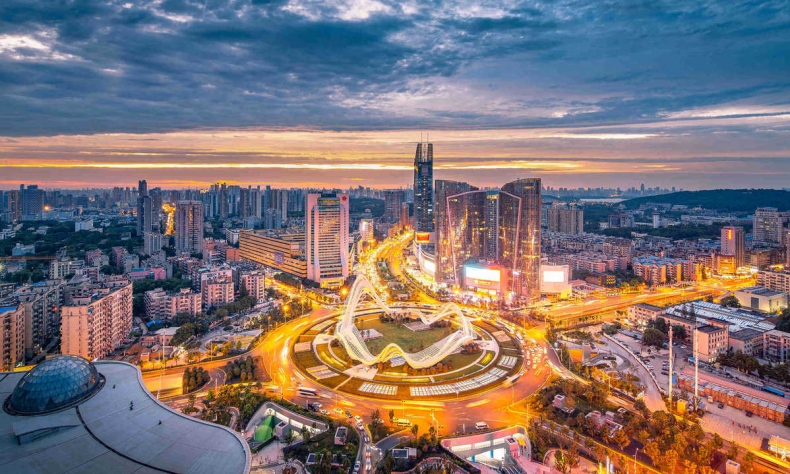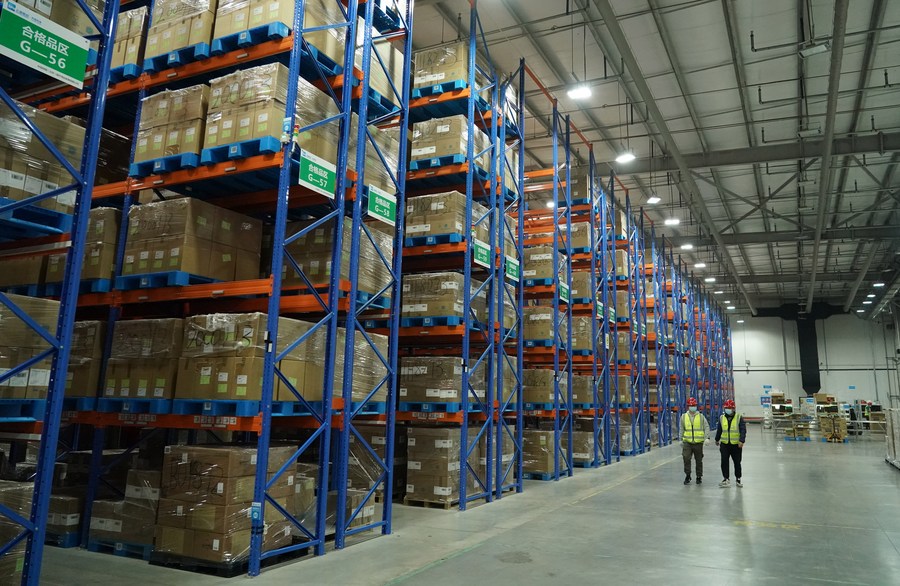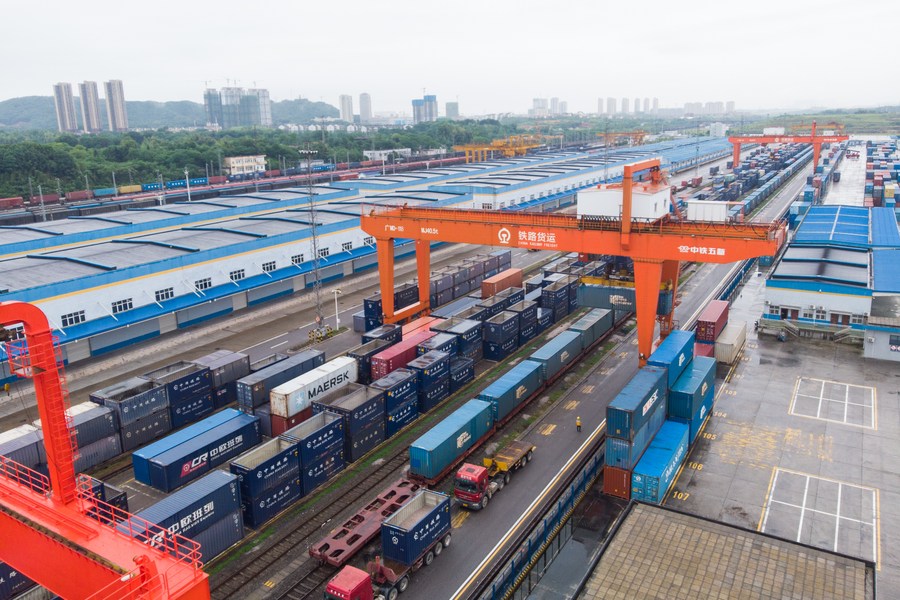China’s Economy Keeps Roaring Ahead Despite Pandemic

We should expect China’s economy to stay strong for the rest of the year and this nation could emerge as the leading driver for growth for the international economy as well.
As a native of the United States and growing up as a child in the 1980s, I recall a TV commercial about a so-called “Energizer Bunny”, which would feature a toy bunny walking while pounding cymbals. It was powered by the Energizer battery. The toy bunny would get kicked around, take a pounding but it kept walking and playing as the announcer would say, “The Energizer Bunny, it takes a licking but it keeps on ticking.”
The Energizer Bunny appears to be emblematic of China’s current economic conditions and how the country has tackled the Coronavirus to move forward on robust GDP (gross domestic product) growth rates with the rebound kicking into high gear in the latter half of last year. Let China’s GDP figures speak for themselves. In the third quarter 2020, domestic GDP rose 4.9 percent and fourth quarter 6.5 percent. China was the only major economy to witness GDP growth, year-on-year to reach 2.3 percent in 2020.
This year the numbers have been much stronger, scoring GDP growth 18.3 percent for first quarter and 7.9 percent for second quarter. Chinese manufacturers and exporters had to confront major challenges since the virus started to spread, such as serious supply chain disruptions, limited international travel and in recent months surging inflation rates, higher prices for commodities and energy resources. Yet, China’s economy keeps roaring ahead.
Not allowing Covid to deter China
According to the National Bureau of Statistics (NBS), China’s 7.9 percent growth for second quarter failed to reach the 8.1 percent that was forecast by market experts, including from Reuters news agency. But the government believes the domestic economy can still hit 8.5 percent GDP annual growth or higher by end of the year and strike above 7 percent for 2022.
In China’s post-pandemic stage, domestic consumption keeps rising substantially, while there’s continued strong external demand for Chinese goods, as well as high infrastructure investments. Beijing can highlight key success stories to explain the resilience of the nation and its financial outlook.

Most nations around the world have been hard hit by the COVID-19 pandemic but starting in April last year, the number of reported Coronavirus cases in China had dropped dramatically and there had been no shocking second or third waves of the virus spreading in the country. China’s remarkable ability to tackle the virus allowed the Chinese to re-focus their efforts on their jobs, businesses and to returning life back to normal. People went back to work in the farms, factories, logistics services and offices that prevented any serious disruptions in regards to food security and food supply, along with supply chains in the manufacturing sector.
Interesting enough, China was the first nation to get hard hit by the Coronavirus when public health officials had alerted Beijing and the World Health Organization (WHO) starting in late December 2019. The city of Wuhan with a population of around 12 million in central China’s Hubei Province went into lockdown for two and half months beginning on January 23, last year. The Western mainstream media had gone into over-drive to warn of impending doom, but alas it was the West, not China, that had nearly collapsed under the pandemic impact.
China shifting towards ‘dual circulation’
The crucial turning point was when China announced a new economic strategy in September last year called, ‘dual circulation’. China proposed to continue endorsing globalism by welcoming more free trade and cross-border investments, as well as pushing ahead on signing more bi-lateral and multi-party free trade agreements, such as the RCEP (Regional Comprehensive Economic Partnership) that was signed last December by member states in ASEAN (Association of Southeast Asian Nations), Australia, New Zealand, Japan, South Korea and China.

Nevertheless, some western governments have threatened to take the initial steps to decouple from the Chinese market, by supporting Washington-led sanctions on Chinese enterprises. Western hi-tech firms have also distanced themselves from Chinese fintech investors and hi-tech companies. The anti-China business practices have disrupted global supply chains and the US government has blocked polysilicon materials made in Xinjiang, used for the manufacturing of solar cells in the solar power industry.
The Chinese government had anticipated the dark winds of geopolitical changing trends and the ‘dual circulation’ was a response to it. The government announced that if other nations push back against China, the domestic manufacturers would shift gears by boosting Chinese consumption and services so demand from Chinese consumers can replace the potential downward trends in the exports markets.
But China’s foreign trade remains robust
China’s manufacturers and exporters have not suffered in the meantime. In the second quarter this year, the nation’s exports rose by 32.2 percent surprising the experts. Industrial production increased by 8.3 percent and retail sales rose 12.1 percent. Higher inflation rates are not a big story in China either. The PBOC and government did not rely on massive stimulus spending to help the nation’s economy survive the pandemic. By keeping a tight lid on liquidity, that kept inflation largely at bay while the value of the Chinese yuan had increased in value by around 10 percent compared to the US dollar since March 2020.
The Chinese government has enforced new regulations to prevent a “too big to fail” financial crisis, by deleveraging state-owned banking giants, taking tighter control over local government debts. As reported by the Global Times, in the first five months of this year, special purpose Chinese bonds issuance totaled RMB1.2 trillion but for the same time frame last year, the bond issuance amounted to RMB2.3 trillion. Beijing did not panic but assumed a more cautious approach to the economy, which tampered down on inflation and the pressures that stem from it.

China poised to drive world economic growth higher
China has shown it has withstood the test of time and most daunting challenges in recent years. The Covid pandemic made the Chinese feel more united and the ‘dual circulation’ strategy will ease the pressures. China has the world’s largest population and manufacturing base. Chinese consumers have come to the rescue while the domestic property markets and home sales have maintained boom times as usual.
And the Covid pandemic has not ended. Washington officials have expressed grave concerns over the ‘delta variant’ of Covid that could result in the US and Europe returning back to a lockdown scenario, while China has not appeared adversely affected by the virus and its variant strains in the past 12 months and longer.
We should expect China’s economy to stay strong for the rest of the year and this nation could emerge as the leading driver for growth for the international economy as well. China is the Energizer Bunny, “it takes a licking, but keeps on ticking”, serving as a testament the ‘China Model’ should never be underestimated.
The article reflects the author’s opinions, and not necessarily the views of China Focus.
 Facebook
Facebook
 Twitter
Twitter
 Linkedin
Linkedin
 Google +
Google +



